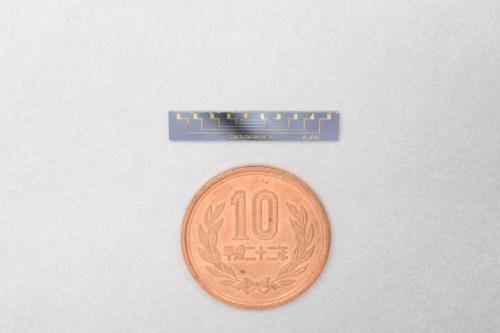
The technology behind quantum teleportation is about to take a major leap forward: English and Japanese scientists have successfully condensed the massive apparatus needed to teleport a single piece of quantum data by shrinking its core circuit to a penny-sized microchip, a crucial first step toward integrating an ultra-high-speed quantum computer onto a photonic chip.
Unlike traditional silicon-based computers, quantum computers use sensitive versions of binary bits (0’s and 1’s) called quantum bits or qubits for short, which are implemented using photons, or particles of light. Quantum teleportation works by transferring qubits from one photon to the other, a process that conventionally requires the alignment of hundreds of optical instruments in not the early room-sized computers. When the first reliable quantum teleportation was successfully implemented by Professor Akira Furusawa from the University of Tokyo in 2013, the set-up covered several square meters, took many months to build, and reached a wall in terms of scalability, meaning that the setup was impractical, and limited the further advancement of quantum computing until one finally developed the means of condensing such equipment.
 Above: Professor Furusawa’s setup from 2013 was condensed to the size of a penny
Above: Professor Furusawa’s setup from 2013 was condensed to the size of a penny
Two years later, new research conducted by Professor Jeremy O’Brien from the University of Bristol has resolved the scalable challenge, by using a nano-fabrication technique to condense those same optical circuits onto a microchip measuring 0.0001 square meters; this is the first time quantum teleportation has ever been demonstrated on a silicon chip. “Being able to replicate an optical circuit which would normally require a room sized optical table on a photonic chip is a hugely significant achievement. In effect, we have reduced a very complex quantum optical system by ten thousand in size,” exclaims Professor O’Brien.
Quantum computing breakthroughs are of paramount importance in advancing technology beyond the limits suggested by Moore’s Law. Recall that Moore’s prediction observes that the number of transistors double every one-and-a-half years as transistor size continuously shrinks; meaning, computation performance will continue to advance until the transistors dictating said performance power reach the size of a single atom, at which point the laws of physics prevent them from functioning as electron gates.
Quantum mechanics are predicted to rectify this issue by storing exponentially more data within a few qubits than a classic register is able to store in the same amount of bits. A classical register composed of three bits can only store one out of eight different numbers at any given time, whereas a quantum register composed of three qubits can store all eight in superposition, allowing far more calculations in be performed parallel — thus, faster processing time. These principles will give birth to a new generation of ultra-powerful quantum computers and ultra-secure quantum communications reliant on qubits over bits; the implementation of quantum teleportation across a microchip is the first step in realizing the potential of quantum technologies.
“This latest achievement enables us to perform the perfect quantum teleportation with a photonic chip. The next step is to integrate whole the system of quantum teleportation,” states Professor Furusawa.
Source: Phys.org
Advertisement
Learn more about Electronic Products Magazine





